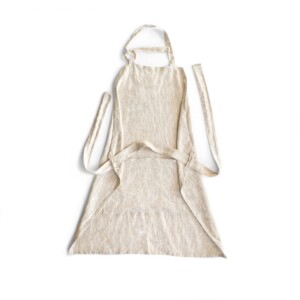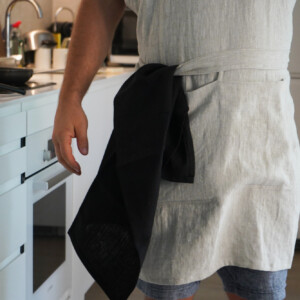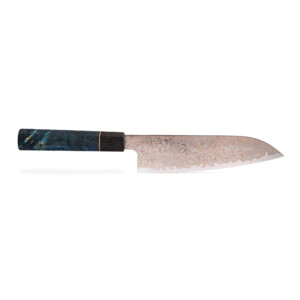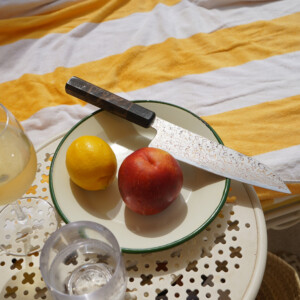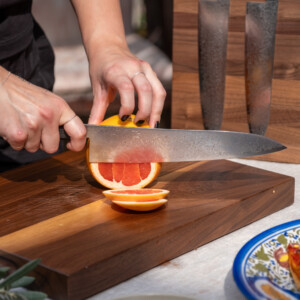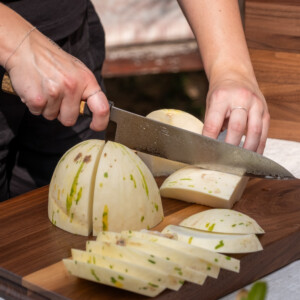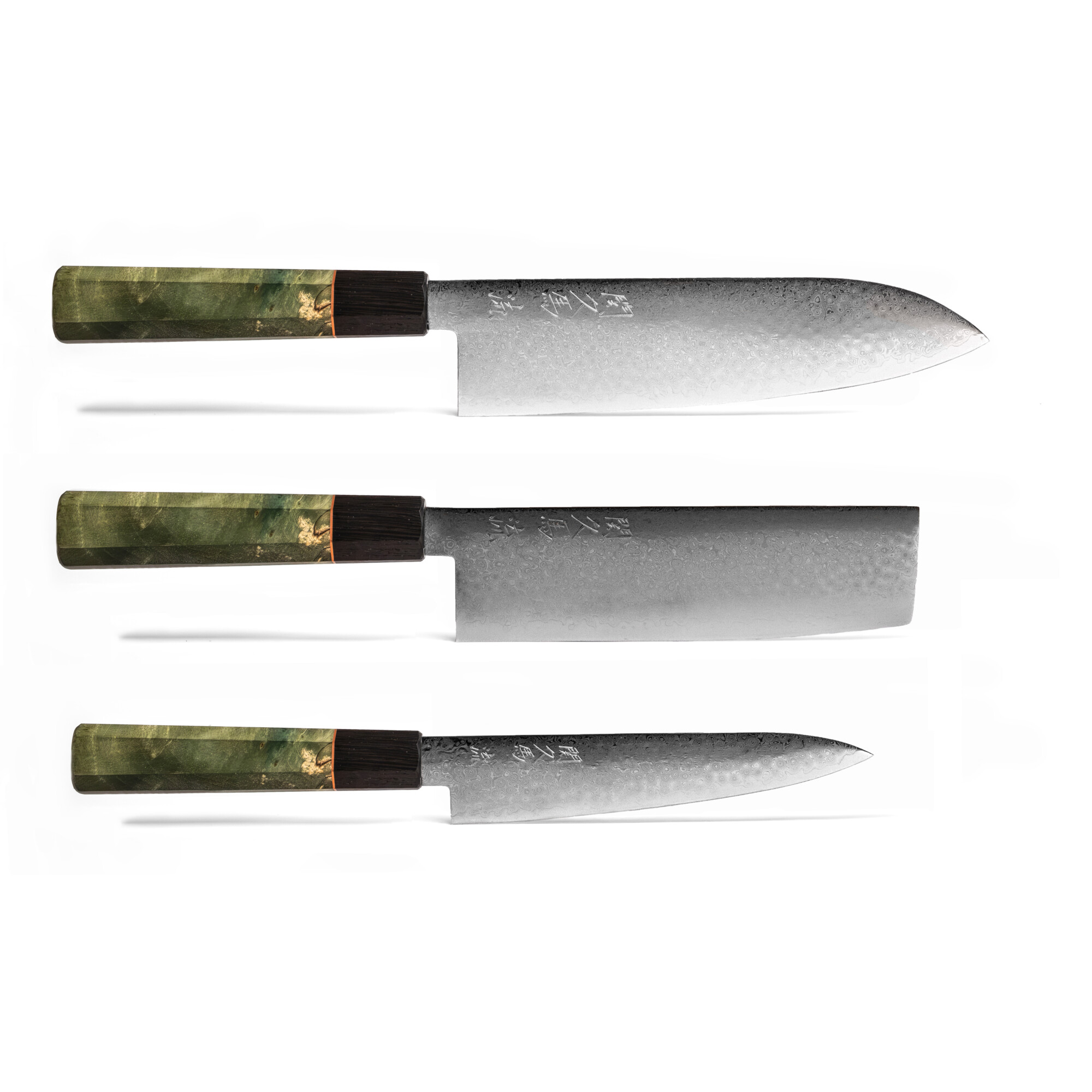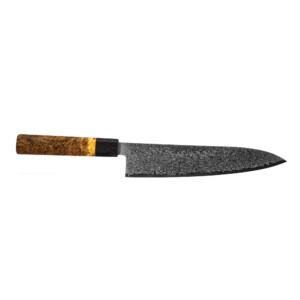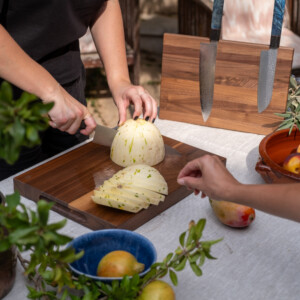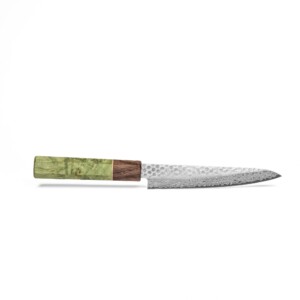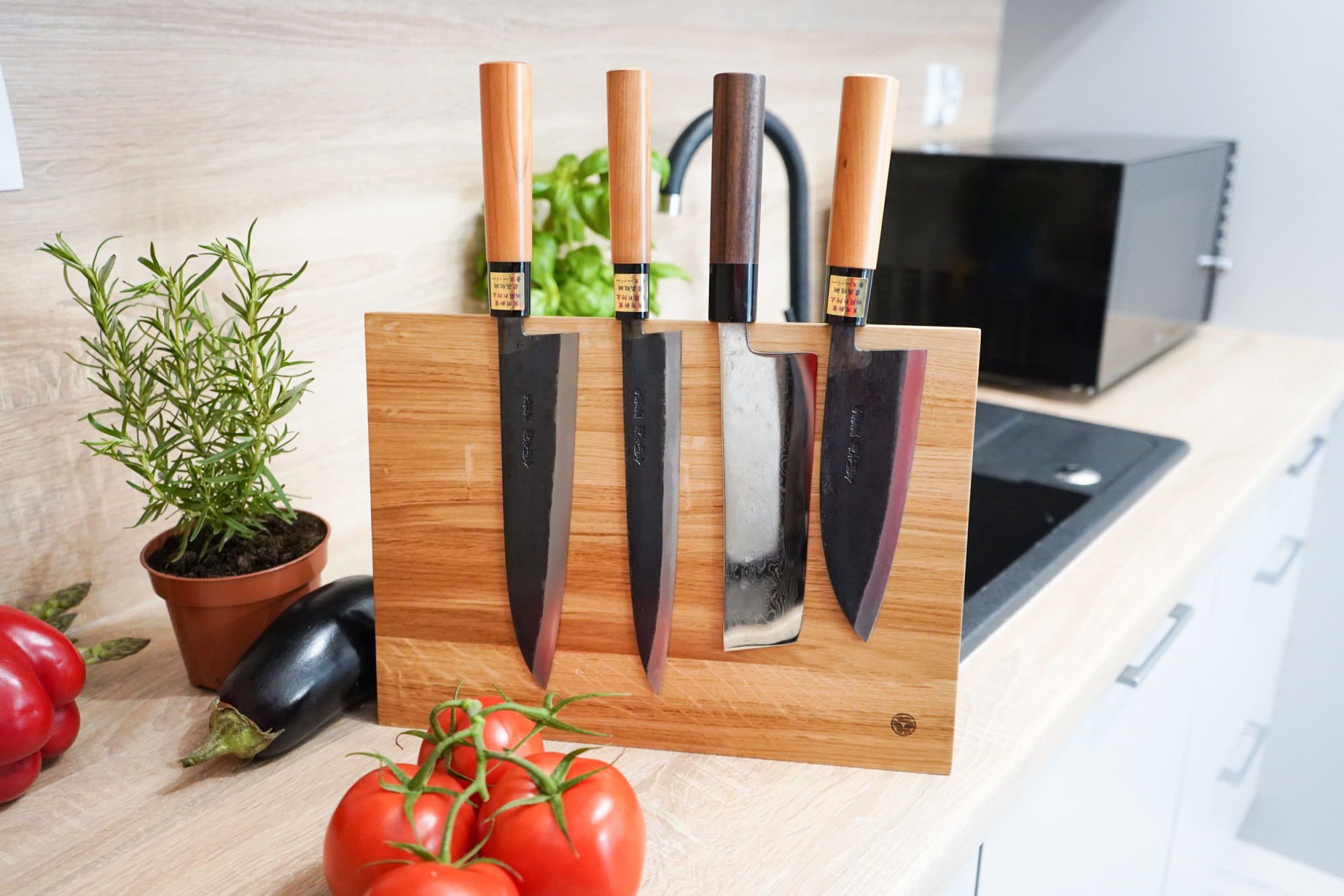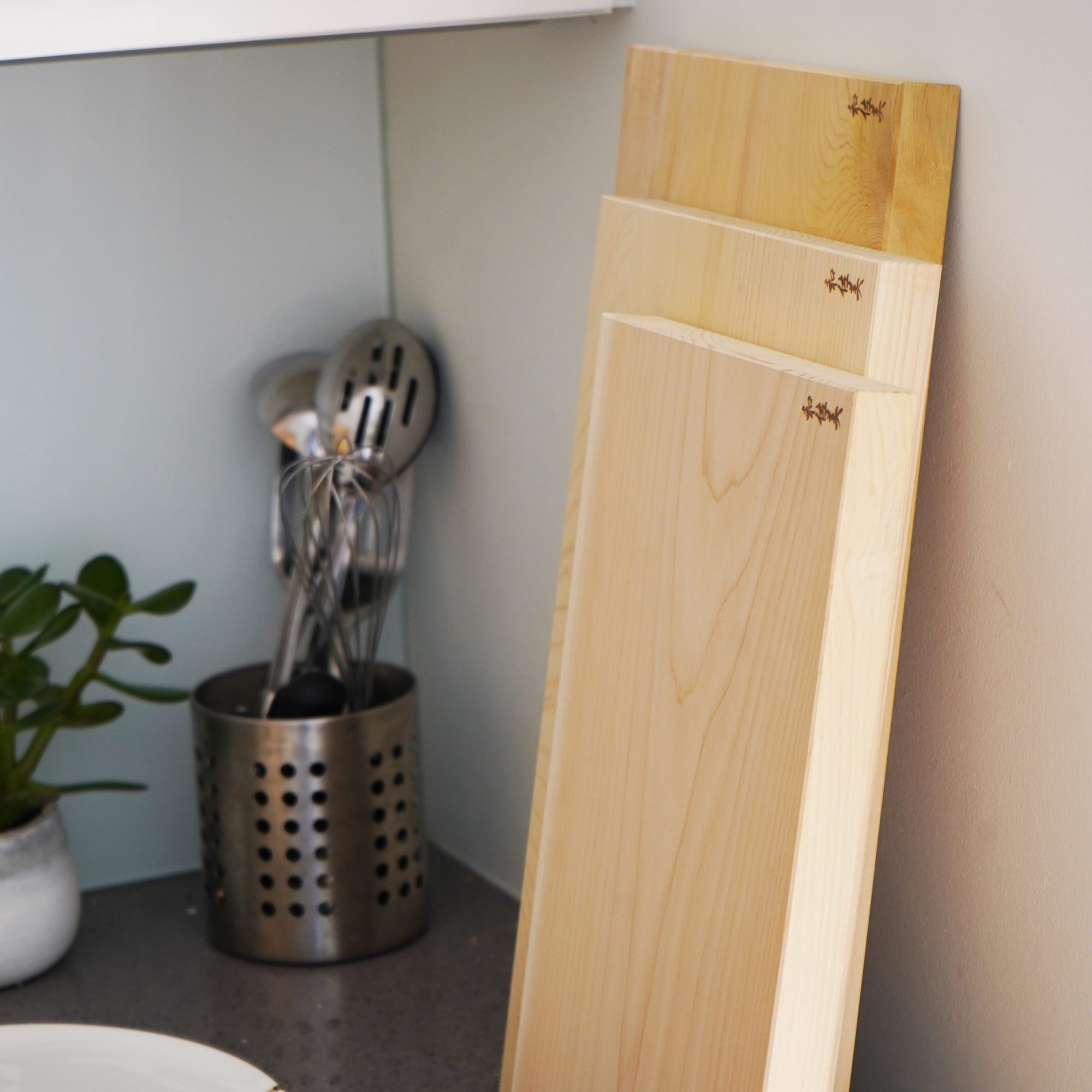At Oishya, we have a deep appreciation for the rich cultural heritage that infuses every aspect of our Sakai Kyuba knives. From the centuries-old bladesmithing techniques passed down through generations in Sakai, to the elegant wooden boxes that house each knife, we strive to honour the traditions that make Japanese craftsmanship renowned worldwide.
One such tradition that we incorporate into every Sakai Kyuba knife is the use of hanko, or carved name seals, on our certificates of authenticity. But what exactly are hanko and why are they so integral to Japanese art and society? Let’s dive in!
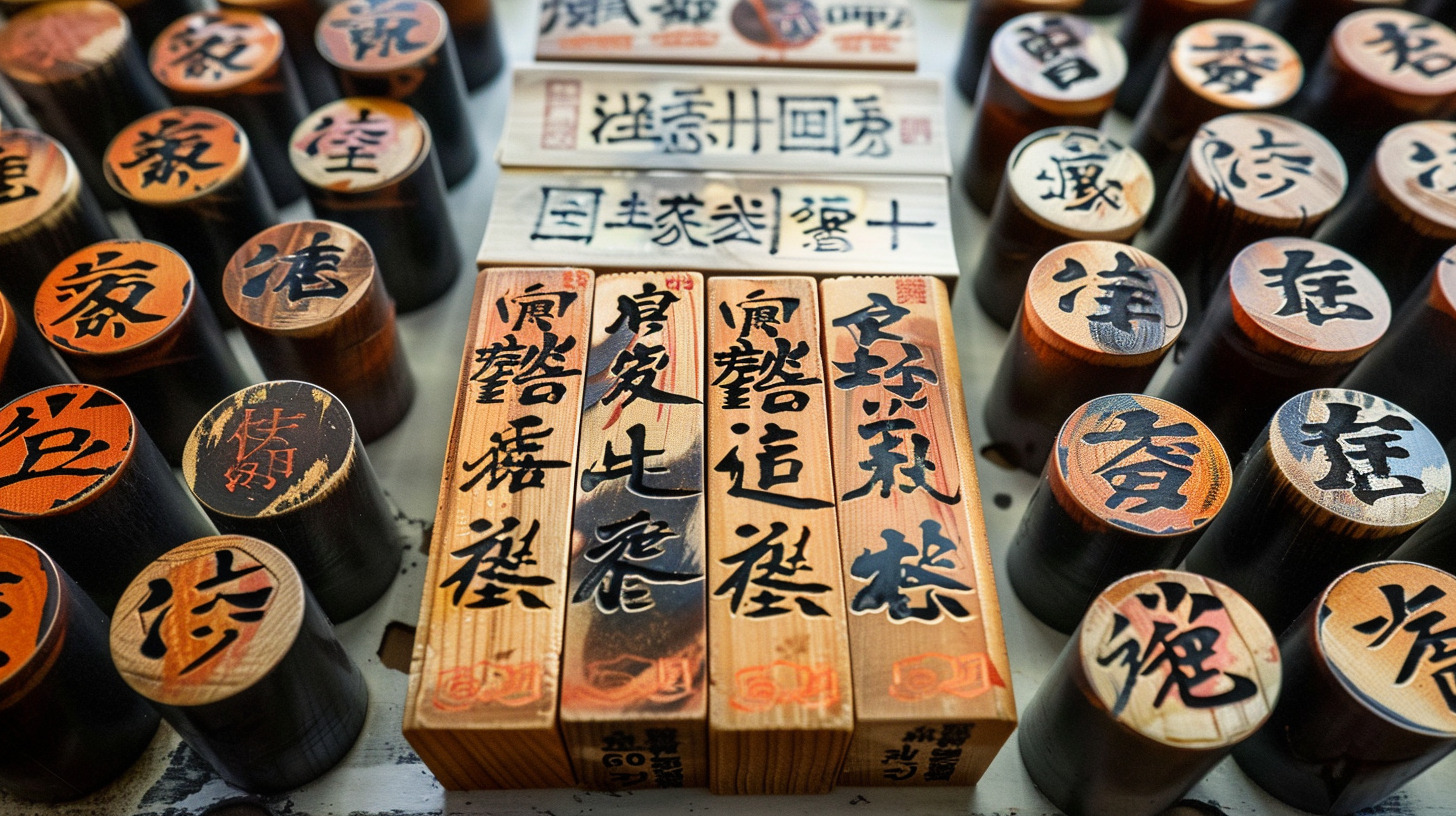
A hanko, also known as an inkan, is a small carved stamp used in place of a signature on official documents, artwork, and other important items in Japan. Typically made from materials such as wood, ivory, or stone, each hanko is unique to the individual and serves as a symbol of their identity.
The custom of using hanko originated in ancient China, where carved seals were used to sign official decrees and contracts. As this practice spread to Japan, it evolved to become an essential part of Japanese life, business and culture.
In feudal times, samurai carried intricately carved hanko made from premium materials like jade and gold, often adorned with their family crest. These hanko not only served as a signature but also as a status symbol, much like a coat of arms in Western heraldry.
During the Edo period, hanko usage became widespread among merchants and artisans as a way to sign contracts and brand goods. Specialist hanko carvers emerged, elevating the craft to an art form of its own. Apprentices would study for years under master carvers to learn the precise techniques needed to create these exquisite stamps. The legacy of those skilled artisans lives on today, with modern hanko carvers creating both traditional and contemporary designs.
At Oishya, we knew we wanted to incorporate this iconic piece of Japanese heritage into our Sakai Kyuba and Seki Kyuba knives…
Each of our knives comes with a certificate of authenticity, hand-signed and stamped with our official company hanko. This is our way of guaranteeing that every Sakai Kyuba knife is a genuine product of Japan, handcrafted by master artisans using traditional techniques.
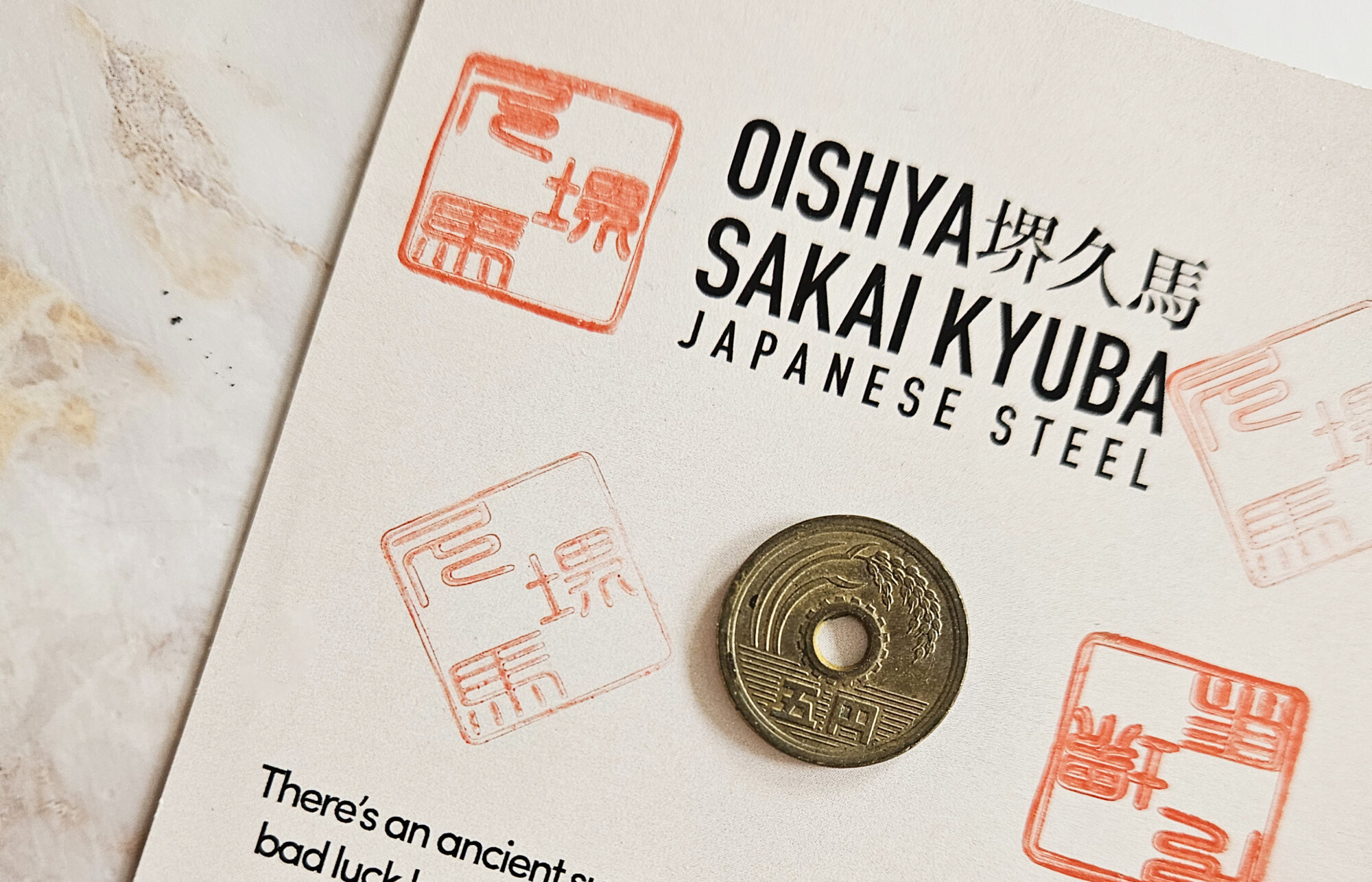
When customers first open their elegant oak wood Sakai Kyuba box, they are greeted by this certificate, a physical representation of the knife’s provenance and quality. The hanko stamp itself is a work of art, carefully carved with our company name and kamon (family crest).
Stamping the certificate with this hanko is a ritual of sorts, a final step in the journey of the knife from forge to customer. It symbolises our commitment to upholding the highest standards of quality and authenticity, and welcomes the new owner into the storied legacy of Japanese craftsmanship.
But hanko are more than just a signature or seal of approval.
In Japan, they are imbued with cultural significance and superstition. It’s believed that the vermilion ink used to stamp hanko has mystical protective powers, warding off evil spirits. Even the act of pressing the hanko into the ink paste is done with intention and meaning.
In business, the exchange of hanko-sealed contracts represents a sacred bond of trust between parties. Unlike Western signatures which are often hastily scribbled, stamping a hanko requires a decisive, firm press – a physical representation of one’s commitment to the agreement.
This spirit of intentionality and care is something we at Oishya aim to embody in every aspect of our work, from the design of our Sakai Kyuba knives to the hanko-stamped certificates that accompany them. Just as each hanko is custom carved for an individual, each of our knives is crafted with the end user in mind, a bespoke tool for culinary creativity.
When a customer grips their Sakai Kyuba knife for the first time, feeling the weight of the centuries-old tradition in their hand, they are not just holding a blade – they are holding a piece of Japanese culture itself. And when they glance at the hanko-sealed certificate, they can be assured of the knife’s quality and heritage.
In a world of mass production and disposable goods, Sakai Kyuba stands apart as a brand committed to preserving and celebrating the artisanal traditions of the past. The hanko stamp on our certificates is a symbolic representation of that ethos, a mark of authenticity and craftsmanship.
It’s also a reminder of the human connection behind each knife. Just as the hanko is a representation of an individual’s identity, each Sakai Kyuba blade carries the energy and spirit of the artisans who forged it. When a customer stamps their own hanko onto the certificate of authenticity, they are adding their unique mark to the knife’s story.
This connection between crafter and user is at the heart of what makes Sakai Kyuba knives so special. In a fast-paced modern world, they offer a moment of pause, a chance to appreciate the beauty and functionality that can only come from something made slowly and with great care.
Our commitment
As we move forward as a company, we at Oishya remain committed to honouring the Japanese traditions that make our products truly unique. The hanko stamp on our certificates is a small but meaningful symbol of that dedication, a sign that every Sakai Kyuba knife is not just a tool, but a piece of culture and craftsmanship.
When customers see that vermilion seal, they know they are holding something special – a knife that embodies the spirit of Japan, from the skilled hands that forged it to the artful packaging it arrives in. It’s a reminder to approach cooking with the same intention, care and appreciation that went into the knife’s creation.
In a sense, owning a Sakai Kyuba knife is like holding a piece of history in your hand, a connection to the generations of artisans who have honed their craft over centuries. The hanko-sealed certificate is a testament to that legacy, a promise that the traditions of the past will continue to thrive in the kitchens of today.
So the next time you unbox your Sakai Kyuba knife and see that vibrant red hanko stamp on the certificate, take a moment to appreciate all that it represents. The artistry, the craftsmanship, the culture, and the connection between maker and user. Then let that appreciation infuse your cooking, knowing that with each slice, you are partaking in a rich tradition that spans centuries and continents.










